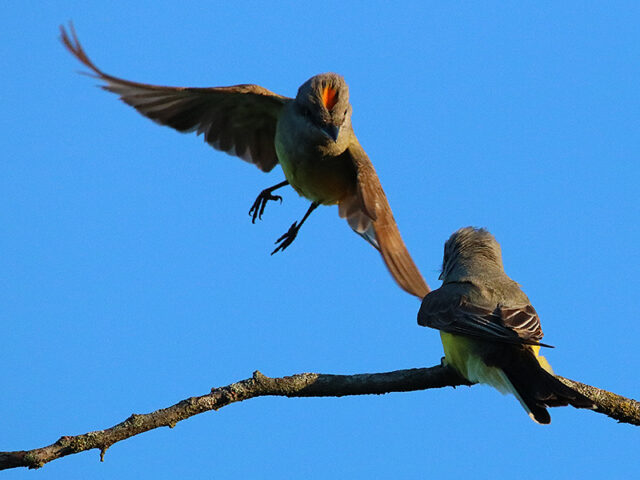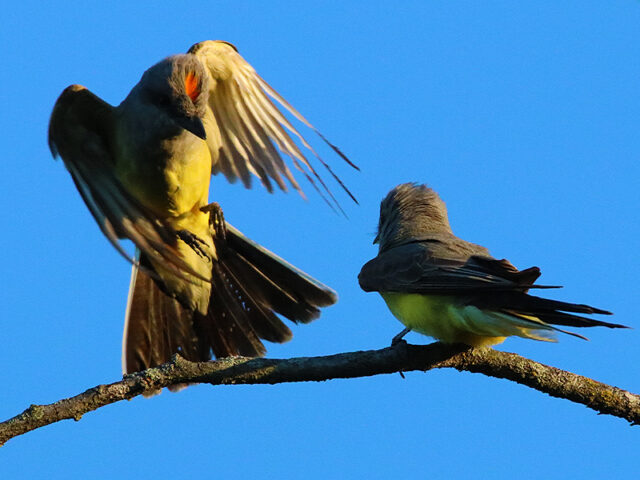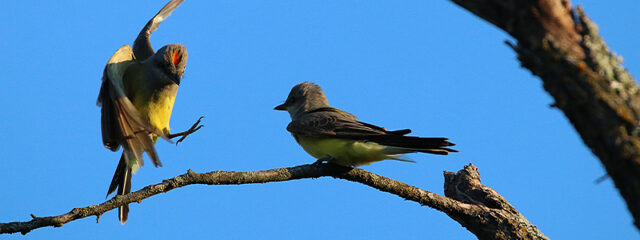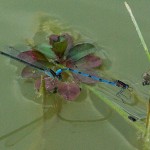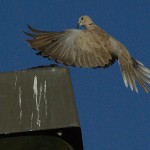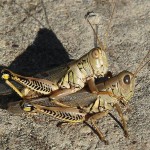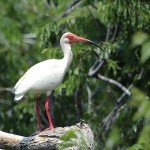Dateline – June 24, 2021 – Cedar Hill, Texas

Western Kingbirds spend the winter in the far reaches of Central American. They return to north Texas in mid to late spring, where they spend much of the summer engaged in breeding activities. Below I have included some general description information about the Western Kingbird from The Cornell Lab All About Birds website…
An eye-catching bird with ashy gray and lemon-yellow plumage, the Western Kingbird is a familiar summertime sight in open habitats across western North America. This large flycatcher sallies out to capture flying insects from conspicuous perches on trees or utility lines, flashing a black tail with white edges. Western Kingbirds are aggressive and will scold and chase intruders (including Red-tailed Hawks and American Kestrels) with a snapping bill and flared crimson feathers they normally keep hidden under their gray crowns.
The Cornell Lab All About Birds
On a recent outing I came across a pair of Western Kingbirds just in time to photograph them mating. Here’s how it happened…
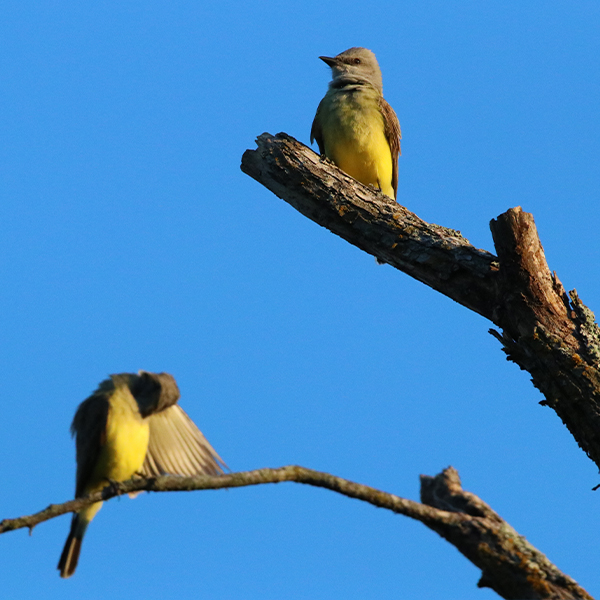

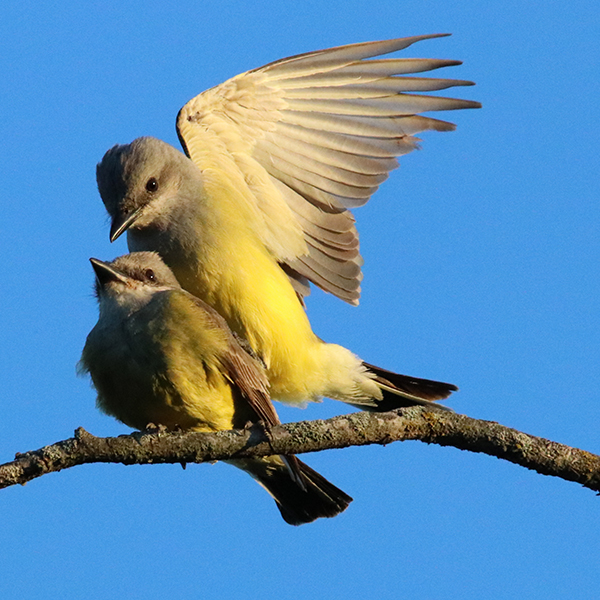
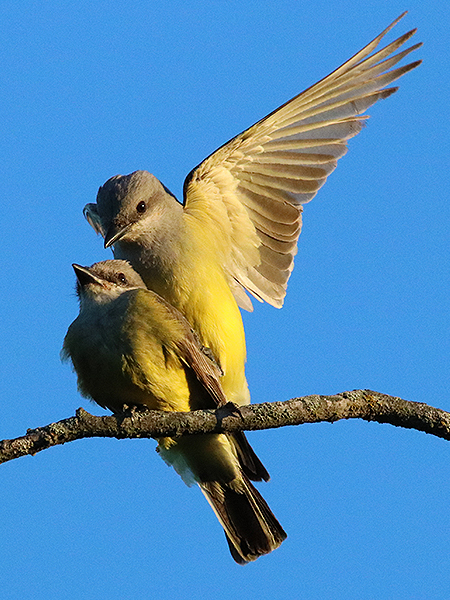

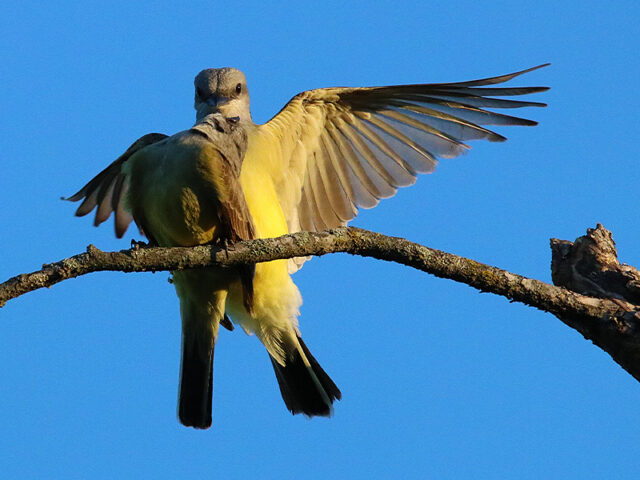
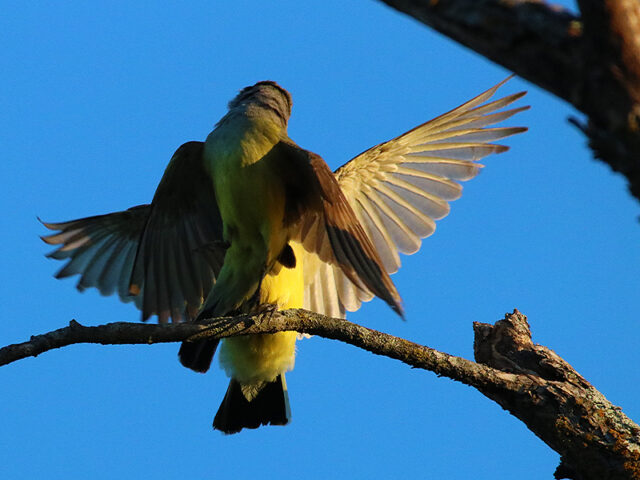
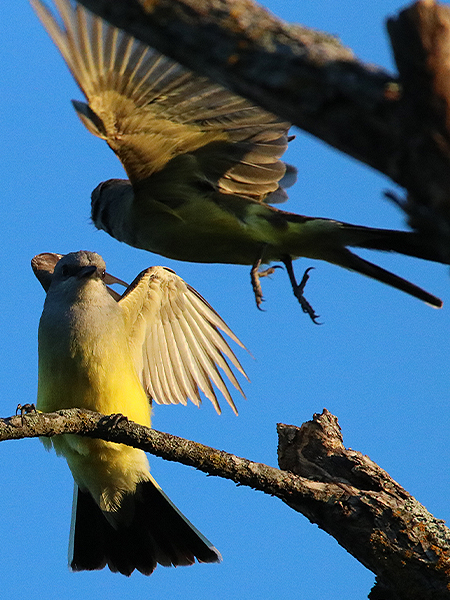


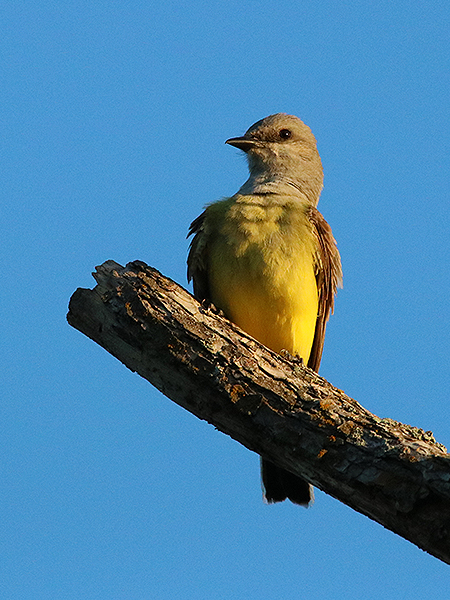
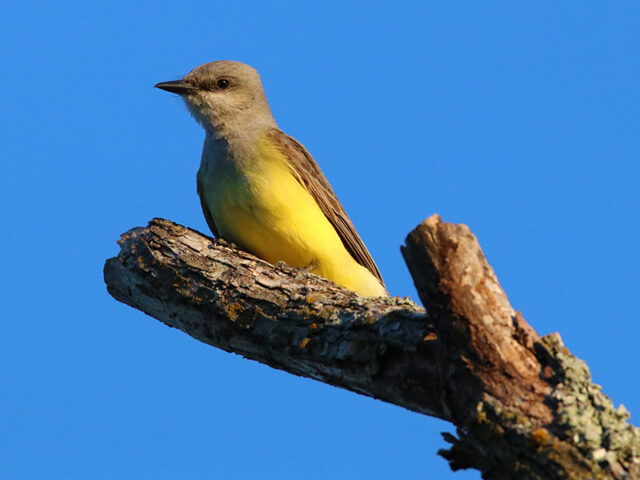
In the following text you will find a description of the of the Western Kingbird’s breeding habits as described by The Cornell Lab All About Birds website…
Males usually arrive at breeding areas before females and patrol the loosely defined borders of their territories. Once paired up, the male and female both help defend their territory, which shrinks as the breeding season progresses. By the middle of incubation the territory is quite small, consisting mainly of the nest tree and nest, but the pair defends it vigorously against other Western Kingbirds and other kingbird species. They even chase away larger predators, such as Red-tailed Hawks and American Kestrels, using a harsh buzzing call, snapping their bills, and raising their hidden red crown feathers. One of the biggest causes of nest failure is predation, despite the valiant efforts of the parents. Nest predators include snakes, squirrels, woodrats, owls, hawks, falcons, ravens, crows, magpies, and shrikes. Pairs mate monogamously, staying together to feed their young for up to three weeks after the young have fledged. They are mostly solitary throughout the rest of the year. Though Western Kingbirds tolerate neither closely related species nor predators in their territories, they may nest in the same tree as other birds such as Mourning Doves, Great-tailed and Common grackles, Bullock’s Orioles, Ash-throated Flycatchers, House Sparrows, American Robins, House Wrens, and Northern Flickers.
The Cornell Lab All About Bird
As alluded to in the quoted text above, when kingbirds are excited or agitated they will sometimes display a small patch of red feathers located on the crown of their heads. I managed a few photos of this behavior during my brief encounter with the mating kingbirds. This was a new discovery for me, as I did not know kingbirds did this until I began investigating the flash of crimson in the pictures below. In this particular case, I believe “excited” is the reason for the display…
